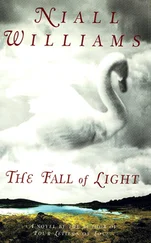Among Mehsud’s most famous victims was the former president of Pakistan, the wildly popular Benazir Bhutto, who had just returned from exile bravely promising to stand up to the Taliban “cancer” that was devouring her country. Although many conspiracy-oriented Pakistanis have blamed everyone from the Israelis to the Pakistani government itself for killing Bhutto in December 2007, Mehsud had loudly promised he would kill her if she returned to Pakistan, and he appears to have fulfilled his promise. 4Upon hearing of her death at the hands of his assassins, he is reported to have gloated, “Fantastic job. Very brave boys, the ones who killed her.” 5
But Bhutto was not the only one to die in Mehsud’s bloody terror campaign. Mehsud’s fedayeen (suicide bombers) entered holy Sufi-mystic shrines, hospitals, factories, anti-Taliban jirgas (tribal meetings), mosques, Pakistani army and Inter Services Intelligence (ISI) bases, a Marriott hotel, polling stations, police recruitment posts, political rallies, refugee camps, and other public places and detonated themselves, slaughtering and maiming countless civilians. The unprecedented slaughter was a shock to many Pakistanis who had previously been tolerant of the Taliban. Mehsud’s objective seemed to be to shatter Pakistani civil society just as the insurgents had previously done in Iraq.
Although the Pakistani army made several halfhearted efforts to enter the untamed mountainous region from which Mehsud ran his terrorist state in the tribal province of South Waziristan, they were seemingly incapable of conquering his rugged realm. In fact, Mehsud’s hardy Taliban fighters beat the Pakistani army in several battles, on one occasion capturing more than two hundred Pakistani soldiers and beheading several of them on video. 6One of the oppressed people of South Waziristan claimed, “South Waziristan now seems like a state within the state, and Baitullah Mehsud is running this like a head of government. Now he’s an all-powerful man whose writ and command is visible across the tribal belt.” 7
In his breakaway western realm Mehsud’s followers began to enforce a strict version of Islamic shariah law that was similar to the draconian system enforced by the Taliban in neighboring Afghanistan prior to 2001’s Operation Enduring Freedom. Movie theaters, DVD stores, and girls’ schools were burned, television sets were destroyed as “satanic devices,” women caught in adultery (often something as innocuous as being caught in public with a man who was not their husband) were publicly stoned to death, those accused of stealing were arbitrarily executed, tribal leaders known as maliks were killed, men were forced to grow long Taliban-style beards, and a gloom settled on the province of South Waziristan and neighboring tribal regions conquered by the Pakistani Taliban. In essence, the secular system of Pakistan’s founder, Muhammad Ali Jinnah, and the laws of Pakistan had been overturned in Mehsud’s mini-Talibanistan. The darkness of the Afghan Taliban had simply migrated across the border to the Pakistani tribal zone once the Americans invaded Afghanistan.
For many Pakistanis who saw South Waziristan and the other wild Pashtun tribal lands on the northwestern frontier as an autonomous realm (known as the Federally Administered Tribal Agencies, or FATA) that had not really been a part of Pakistan proper, the de facto secession of this territory was not alarming. India, not fellow Muslims, was after all perceived as the main threat to Pakistan, regardless of how fanatical those Muslims might be. The “Talibanization” of Pakistan alarmed the Americans, whose newly elected president, Barack Obama, described this process of radicalization as “a cancer that risks killing Pakistan from within” more than it harmed the somnolent Pakistanis who had previously sponsored the Taliban. 8
But the Taliban militants were not satisfied with terrorizing average Pashtun tribesmen in the FATA or carving out fundamentalist theocracies in the remote tribal agencies, and they began to move from their autonomous border provinces into Pakistan proper in 2008. Their tribal followers rose up in the scenic mountain province of Swat Valley, which is located about a hundred miles to the northwest of the Pakistani capital of Islamabad. In this former tourist resort area, they similarly carved out a Taliban-style militant state and began beheading police, burning girls’ schools and beating girls on video, and enforcing strict Islamic law. 9
The videos of the unbearably gruesome beheadings and floggings went viral in Pakistan and finally began to disturb average Pakistanis who had previously been strangely willing to overlook the Taliban’s brutality. 10The violence had come too close to home. By 2009 the Taliban had begun to spread from the Swat Valley to neighboring Buner Province. No one knew where the terrorists would stop. For the India-obsessed Pakistanis, Mehsud and his Taliban vigilantes had finally come to be seen as a national threat.
At this time the desperate Pakistani government began to ask the United States to use its Predator and Reaper drones, which had been targeting al Qaeda and exiled Afghan Taliban leaders in Pakistan’s tribal zones, to kill the man Pakistani officials described as “the mother of all evil.” 11The Americans were only too happy to oblige their allies and had reasons of their own to seek the demise of Pakistan’s most wanted man. Whereas Mehsud’s Pakistani Taliban were mainly engaged in terrorism and war against the Pakistani state, one of the group’s subcommanders, Hakimullah Mehsud, had been attacking U.S. supply convoys traveling through the nearby tribal agency of Khyber to bring supplies to American and Coalition troops serving in Afghanistan. 12Plus, the Americans had been stung by a persistent rumor among paranoid Pakistanis that the United States was somehow sponsoring Baitullah Mehsud to create an excuse for conquering their state and gaining access to their prized nuclear weapons. 13If this were not enough, Mehsud had also promised, “Soon we will launch an attack in Washington that will amaze everyone in the world.” 14Washington and Islamabad agreed that something had to be done about Mehsud.
Thus began the hunt for the notorious Taliban mass murderer. American troops were not allowed on Pakistan’s sovereign territory so the drones were the obvious choice for taking Mehsud out. According to one study, more than a dozen U.S. drone strikes were eventually conducted against Mehsud and his followers once it was decided to assassinate him. But the elusive Mehsud seemed to be impossible to kill. 15He moved from hujra to hujra and rarely gave interviews to outsiders as some of his more media-savvy comrades were known to do. Finding Mehsud in the autonomous mountainous tribal agency of South Waziristan, which was inhabited by almost a half million Pashtun tribesmen, was a Herculean task.
Then, on June 23, 2009, the CIA caught a break when it learned that Mehsud would be attending a funeral in the village of Najmarai in the Makeen District of South Waziristan to commemorate the earlier drone assassination of one of his top lieutenants, named Niaz Wali. CIA drones were scrambled to the scene and sent images to their U.S.-based remote pilots from their high-resolution cameras of the crowd gathered at the funeral. Pakistani spies working for the CIA indicated that the notoriously reclusive Mehsud had blundered and would indeed be in attendance at the funeral along with some of his top commanders. He was somewhere in the crowd of militants and villagers who had gathered to provide a Muslim burial for Niaz Wali and several other slain Taliban fighters. Rarely had so many Taliban leaders gathered in one place at the same time. Although the CIA had previously been comparatively selective in its targeting for fear of killing bystanders and upsetting their Pakistani allies, the decision was made to launch an attack on the funeral. Mehsud was too high value a target for both the Pakistanis and Americans to let him escape. No one in the CIA knew when they would have the chance to kill him again, so the order to fire was given.
Читать дальше












